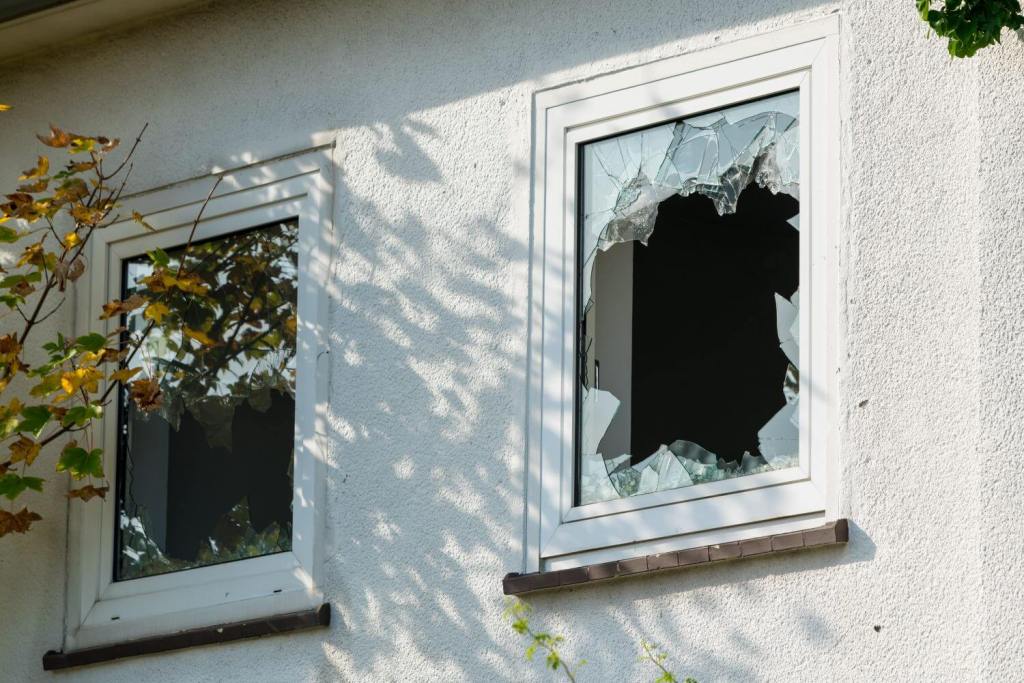In the rare situation that a renter breaks their tenancy agreement or a landlord wants to redevelop or change the use of their property, a Section 8 notice can be used as a last resort.
With the Renters’ Rights Bill set to ban Section 21 evictions, it’s likely that Section 8 will soon become the main way for landlords to evict tenants.
How can Section 8 be used to evict tenants in a range of circumstances, and what can landlords do to resolve disputes and avoid eviction?
Learn more about:
What is Section 8?
Section 8 refers to Section 8 of the Housing Act 1988, under which landlords can evict tenants if the tenancy agreement has been broken or they want to change the use of the property.
Reasons for tenants breaking their tenancy agreement could include:
- not paying their rent
- anti-social behaviour
- using the property for criminal activities
Meanwhile, reasons for changing the use of the property could include:
- the landlord needing to live there themself
- redevelopment
- using the property as a holiday or student let
How does Section 8 work?
A Section 8 eviction can happen at any time during an Assured Shorthold Tenancy (before the contract comes to an end). This is different to a Section 21 eviction, which can only happen at the end of a tenancy – though this and assured tenancies are soon to be abolished as part of the Renters’ Rights Bill.
What is a Section 8 eviction notice?
A Section 8 notice is a warning that the landlord is seeking possession of their property due to a desire to change its use or because there’s been a breach of the tenancy agreement.
Although a Section 8 notice asks a tenant to vacate the property, they won’t need to do so immediately as there will be a notice period.
If the notice period expires and the tenant doesn’t leave the property, the landlord can start a possession claim through the courts to evict the tenant.
For a Section 8 notice to be valid, it needs to include the reason for the eviction (known as ‘grounds for possession’), plus supporting evidence where possible.
Section 8 notice grounds for eviction
There are eight “mandatory” grounds for eviction and a further nine “discretionary” grounds for eviction. During the court process mandatory grounds must be upheld, as long as the landlord provides sufficient supporting evidence. If a Section 8 notice is based on discretionary grounds, the court will assess how reasonable the landlord’s claim is.
Mandatory grounds
- Ground 1: Owner occupation
- Ground 2: Repossession by lender
- Ground 3: Out of season holiday let
- Ground 4: Lets to students by educational institutions
- Ground 5: Minister of religion
- Ground 6: Redevelopment
- Ground 7: Death of assured tenant
- Ground 7A: Anti-social behaviour
- Ground 7B: No right to rent
- Ground 8: Serious rent arrears
Discretionary grounds
- Ground 9: Suitable alternative accommodation
- Ground 10: Rent arrears
- Ground 11: Persistent delay in rent payments
- Ground 12: Breach of tenancy obligation
- Ground 13: Deterioration in the condition of the property or common parts
- Ground 14: Nuisance, annoyance, illegal or immoral use of the property
- Ground 15: Deterioration of furniture
- Ground 16: Employee of landlord
- Ground 17: Recovery of possession where grant is induced by false statement
Section 8: mandatory grounds for possession
Ground 1: Owner occupation (prior notice ground)
This ground can be used if:
- the landlord lived in the property as their main home before the tenancy and wants to move back in
- the landlord needs the property to live in for themself or their spouse
Ground 2: Repossession by lender
This ground can be used if a mortgage lender is repossessing the property and needs it to be empty for a sale.
It has a minimum notice period of two months.
Ground 3: Out of season holiday let
This ground can be used if the property was previously used as a holiday let and the landlord wants to use it for this purpose again. For this ground to be valid, the current tenancy must be for a fixed term of less than eight months.
It has a minimum notice period of two weeks.

Ground 4: Lets to students by educational institutions
This ground can be used if the property was previously used as a student let and the landlord wants to use it for this purpose again. For this ground to be valid, the current tenancy must be for a fixed term of less than 12 months.
It has a minimum notice period of two weeks.
Ground 5: Minister of religion
This ground can be used if the property is held for use by a minister of religion such as a bishop or priest, and is needed for this use.
It has a minimum notice period of two months.
Ground 6: Redevelopment
This ground can be used if the landlord wants to demolish or reconstruct the whole or a substantial part of the property and the work can’t be completed while the tenant lives there. In this case, the landlord is likely to be liable for moving costs.
It has a minimum notice period of two months.

Ground 7: Death of assured tenant
This ground can be used if an existing tenant passes away. The claim for possession must be made within 12 months of the tenant’s death and it won’t be valid if there’s a surviving spouse living at the property.
It has a minimum notice period of two months.
Ground 7A: Anti-social behaviour
This ground can be used if a tenant meets one of the five conditions for anti-social behaviour:
- noise nuisance
- conviction of a serious offence
- breach of a criminal behaviour order
- closure order
- breach of an injunction to prevent nuisance or annoyance
It has a minimum notice period of one month for fixed term tenancies or four weeks for periodic tenancies.
Ground 7B: No right to rent
This ground can be used if the Home Office notifies the landlord that one of the tenants living at the property doesn’t have the right to rent in the UK due to their immigration status.
It has a minimum notice period of two weeks.
Ground 8: Serious rent arrears
This ground can be used if the tenants owe a minimum of:
- eight weeks’ rent if they pay weekly or fortnightly
- two months’ rent if they pay monthly
- three months’ rent if they pay quarterly or annually
Read more: Help with rent arrears – a guide for landlords
Section 8: discretionary grounds for possession
Ground 9: Suitable alternative accommodation
This ground can be used if the landlord wants to regain possession of their property and they can provide suitable alternative accommodation that meets the needs of the tenant.
It has a minimum notice period of two months.
Ground 10: Rent arrears
This ground can be used if the tenant is in rent arrears that aren’t as serious as those used for mandatory ground 8.
It has a minimum notice period of two weeks.
Ground 11: Persistent delay in rent payments
This ground can be used if the tenant has a history of paying their rent late. There doesn’t have to be any outstanding rent arrears for this to be used as a discretionary ground for a Section 8 notice.
It has a minimum notice period of two weeks.
Ground 12: Breach of tenancy obligation
This ground can be used if the tenant has broken any part of the tenancy agreement that isn’t rent arrears. For example, this could be smoking inside the property.
It has a minimum notice period of two weeks.
Ground 13: Deterioration in the condition of the property or common parts
This ground can be used if the property has been damaged by the tenant.
It has a minimum notice period of two weeks.
Ground 14: Nuisance, annoyance, illegal or immoral use of the property
This ground can be used if the tenant is using the property for illegal or immoral activities, such as dealing drugs. It can also be used if the tenant is deemed to be a nuisance to neighbours.
It doesn’t have a minimum notice period – proceedings can start as soon as the notice is served.
Ground 15: Deterioration of furniture
This ground is similar to ground 13 and can be used if the tenant causes damage to furniture provided by the landlord.
It has a minimum notice period of two weeks.

Ground 16: Employee of landlord
This ground can be used if the tenant was renting the property while working for the landlord but that employment has now ended.
It has a minimum notice period of two months.
Ground 17: Recovery of possession where grant is induced by false statement
This ground can be used if the tenant has rented the property on the basis of false information, given either knowingly or recklessly. False information could be the wrong salary, which could also be a reason why a tenant falls into rent arrears.
It has a minimum notice period of two weeks.
Evictions are a complex issue, so make sure you seek professional legal advice at the earliest opportunity.
What is a Section 8 notice period?
The notice period is the length of time the tenant has to leave the property. As you can see from the grounds for eviction above, notice periods for Section 8 evictions can be anything from immediate up to two months.
Notice periods can be extended if the eviction notice is invalid or if leaving the property by a certain date could cause hardship for the tenant.
If the tenant doesn’t leave the property by the end of the time stated and the Section 8 notice is valid, the landlord can then go to the courts to claim a possession order.
What’s the soonest you can evict a tenant?
If you serve a Section 8 eviction notice using ground 14, there’s no minimum notice period. This means you can apply to the court to repossess your property as soon as you’ve served the eviction notice.
Most other Section 8 grounds for eviction have a notice period of between two weeks and two months.
It’s important to note that as a result of the Renters’ Rights Bill, eviction notice periods could change.
How to serve a Section 8 notice
To issue a valid Section 8 notice, you’ll need to download the latest version of “Form 3” from the government website.
When filling out the form, it will need to include the details of the tenancy, the grounds for eviction, plus the length of the notice period.
It’s important to note that a Section 8 notice can have multiple grounds for eviction, including a mix of mandatory and discretionary reasons.
Depending on what it says in the tenancy agreement, the eviction notice could be delivered in person, put through the letterbox, or sent by post.
What’s the difference between Section 8 and 21?
As detailed above, Section 8 evictions can be used by landlords when they want to change the use of their property or a tenant has broken their tenancy agreement. Section 8 grounds are specific and defined in law.
On the other hand, a landlord doesn’t need to give a reason to serve a tenant with a Section 21 notice. Landlords can serve a Section 21 notice a minimum of two months before the end of a tenancy contract.
For a Section 21 notice to be valid, landlords must comply with a range of regulations such as:
- having a valid gas safety certificate and Energy Performance Certificate (EPC)
- not charging tenants any fees banned by the Tenant Fees Act
- making sure tenants have an up to date version of the How to Rent guide
Renters’ Rights Bill – is the eviction process changing?
As part of the Renters’ Rights Bill, Section 21 evictions are being abolished. This means landlords will no longer be able to evict tenants at the end of their contract without giving a reason.
These changes mean that landlords may have to rely on Section 8 evictions more than ever. The government has pledged to strengthen Section 8 with more grounds for landlords to evict tenants, however it has yet to publish details on how this could work.
However, it’s been proposed that under the new system, tenants will be protected from eviction for 12 months (unless they break their tenancy agreement).
This means that if a landlord wants to sell or move into a property, they’ll have to wait a year and then give the tenant an additional four months’ notice.
While there’s not yet an official date for these new rental changes, they’re expected to become law before the end of 2025.
5 tips for reducing the need to evict tenants
As we mentioned earlier, pursuing an eviction should always be a last resort. Evicting tenants is a complex process that can be very time-consuming and expensive for landlords.
Below are tips to help you reduce the chances of needing to evict a tenant using Section 8:
- Communication is key – having open and regular communication with your tenants can help to build a relationship, which could reduce the chances of them breaking their tenancy agreement. By speaking about any issues as soon as they happen, they could be resolved before they get worse.
- Payment plans can reduce arrears – if your tenant isn’t paying their rent, it’s worth speaking to them about why not. Organising a payment plan can help them to get back on track and make sure you receive the rent you’re owed without going to the courts.
- Regular inspections keep you in the loop – by visiting your property every three to six months, you can spot any damage or illegal behaviour. Inspections are a good time to speak to renters about any issues and if your tenants know you’re committed to visiting the property, they’re less likely to break their tenancy agreement.
- Warnings about tenancy breaches can make a difference – before issuing an eviction notice, you should send your tenants warnings about the rules they’re breaking. This could encourage them to change their behaviour if they don’t want you to start eviction proceedings.
- Make sure compliance checks and documentation are watertight – your tenancy agreement should make clear all the rules tenants need to follow when living in your property, making sure there are no grey areas. Meanwhile, completing important right to rent checks means you won’t have to evict tenants who aren’t legally allowed to live in the UK.
Please use this article as a guide only and get professional legal advice before starting any eviction proceedings.
More guides for buy-to-let landlords
- How to get a buy-to-let mortgage: a simple guide
- What do landlords need to know about the How to Rent guide?
- Delays to new energy efficiency standards for rental properties
- What does accidental damage insurance cover?
